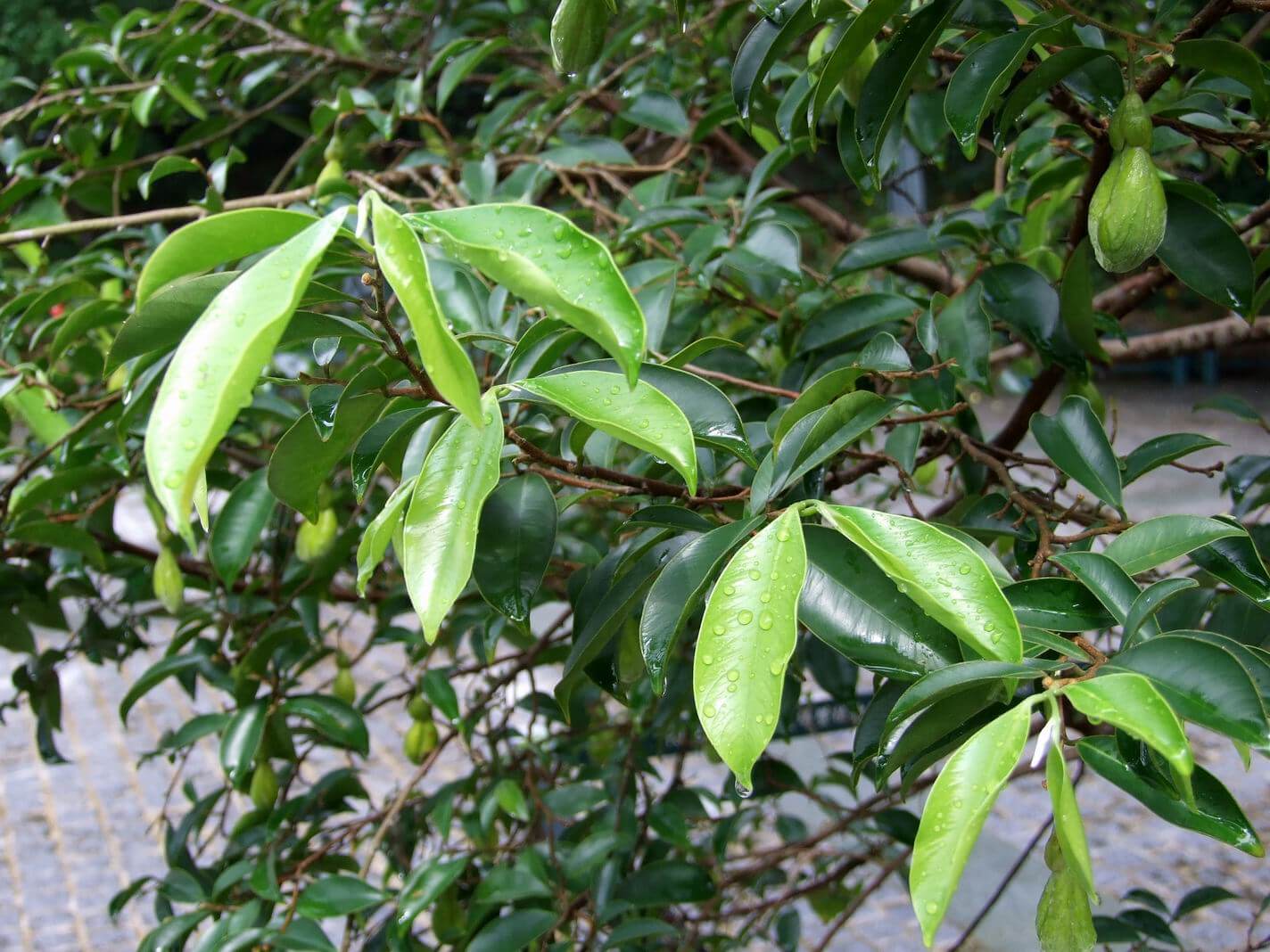- +033 2572 7171
- info@dhanvantary.com

4.5 Rating | 4500 Review

4.5 Rating | 4500 Review
This is a big tree growing up to 60 to 80 feet and with thick stem of 3 to 4 ft in diameter. It is native to South East Asia. The bark is papery thin and was sometimes used for writing like Betula utilis tree bark (Bhojpatra in Sanskrit). Leaves are thin like leather, shiny and up to 3 inches long. Flowers are white in color and fruit is 1 to 2 inches long, smooth and thin.

The bark sometimes gets infected with a fungus (Phaeoacremonium parasitica) in 7 to 8 % of the trees, which turns the bark from light brown to dark brown or black. This leads to a special fragrance unique to Aguru tree due to the presence of the oleoresin.
This infected part of the tree yields Agarwood oil, which is sold in various Arabian countries, China and Japan. The oil of this tree has high economic value as it is very expensive and the cost usually same as 24 carat Gold. The reason is cumbersome distillation process yielding only 30 ml oil from 100 kg of infected wood. The oil is known as Oud and is 100 % natural essential oil.
The fragrance is mainly because of various mix of sesquiterpenes and epoxides, which can also be used as pheromones to attract opposite gender.
There are about 17 species in the genus Aquilaria and 8 are known to produce Agar oil. Aquilaria agallocha is synonym for A.malaccensis, A.secundria.
Agarwood is famous for its role in making of incense sticks for various ceremonies. The wood is also used to make beautiful carvings and sculptures. In many countries of Southeast Asia, the Agarwood beads are made to keep oneself safe from evil spirits and bringing good luck.
Agarwood oil is obtained from the resin of the tree. The resin of the plant is called Gaharu. It is formed naturally as a result of reaction of the tree to the attack of fungus. Attacked trees spread a fragrant gum to protect the injured area, which gets hardened in the form of a resin. The hardened area contains the precious oil trapped within the Resin. This resin is processed to obtain the oil.
This tree is native to Southeast Asia and grows in China, Bangladesh, Bhutan, Eastern India, Thailand and Malaysia.
Latin name
Aquilaria agallocha
Order
Malvales
Family
Thymelaeaceae
Genus
Aquilaria
Latin Name – Aquilaria agallocha
Sanskrit – Aguru, Loh, Krimij, Krimijagdh ( Because it’s infected ), Krumija, Krimijagdha, Anaryaka, Vishvaroopakam, Pravara, Jongakam, ShreshtaVriksha, Vamshika
Hindi /Urdu – Agar
English – Eagle wood
Bengali – Agar Chandan, Agarkashtha, Agaru
Tamil – Agalichandanam, Aggalichandanam
Kannada – Krishna Agaru
Punjabi – Ooda, Pharsi
Telgu – Agaru
Europe – Agilawood, Eaglewood
Arabic & English – Agarwood, Oud, Oodh
Japan – Jinko
Chinese – Chenxiang
Cambodia – Chann Crassna
Indonesia / Malay – Gaharu
Laos – Mai Ketsana
Thailand – Mai Kritsana
Myanmar – Thit Mhwae
| Rasa | Katu, Tikta | Taste | Pungent, Bitter |
| Guna | Laghu, Tikshna | Physical Property | Light, Piercing |
| Virya | Ushna | Potency | Hot |
| Vipaka | Katu | Metabolic Property (After Digestion) | Pungent |
It balances Vata and Kapha doshas.
| Sheet Prashaman – Herbs which Relieve Cold. | Eladi Gana, Saalsaradi Gana, Shleshm Snshaman |
| Shwashar – Herbs which are good for Asthma and breathlessness | |
| Shirovirechan – Herbs which are good for cleansing the head / Sinuses. | |
| Tikta Skandh – Herbs which are bitter. |
1The leaves of the tree are laxative in nature. An herbal tea from the leaves can be used for chronic constipation.
Being bitter, it is good for skin disorders. The bark is used as a tea to be used as a blood purifier.
The paste made from tree bark is useful in many skin disorders like acne, eczema, edema, and psoriasis etc.
It is known for its heating effect. It is called "Sheet-Prashamnan" this means destroyer of cold. The paste of the bark is applied on the body to get rid of cold.
The bark powder is used for gout, indigestion, general body weakness are also further indications.
he bark paste can be applied locally on painful joints due to osteoarthritis and rheumatoid arthritis. It is also useful to fight body odour, stimulant and shows anti-inflammatory property.
Many people chew the bark for getting rid of bad breath.
The Agarwood oil is used in asthma as well. 1-2 drops of oil are given orally, sprinkled on beetle leaf and chewed.
The smoke of Agarwood is also inhaled in cases of chronic sinusitis, rhinitis and allergic problems.
It balances Vata + Kapha Doshas.
Himsagar Thailam – An Ayurvedic preparation for various vata disorders.
Anu Thailam – An Ayurvedic oil for diseases of ear, nose and throat.
Arimedadi Thailam – An Ayurvedic oil for various skin disorders, mouth ulcers, piles.
Agarwood Bark Powder – 3-6 grams.
Agarwood Oil – 1 to 4 drops.
Agar Oil, Agar resinous wood.
